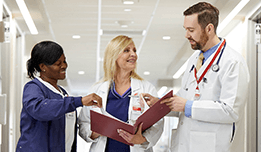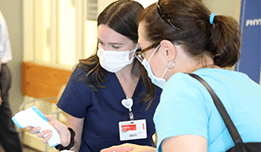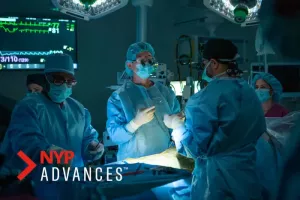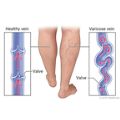Condition Basics
What are varicose veins?
Varicose veins are twisted, enlarged veins near the surface of the skin. They are most common in the legs and ankles. Varicose veins usually aren't serious.
What causes them?
Varicose veins are caused by weakened valves and veins in your legs. Normally, one-way valves in your veins keep blood flowing from your legs up toward your heart. When these valves don't work as they should, blood collects in your legs, and pressure builds up. The veins become weak, large, and twisted.
What are the symptoms?
Varicose veins look like swollen and twisted blood vessels under the skin. They may not cause any symptoms. Mild symptoms may include heaviness, burning, aching, tiredness, or pain in your legs. Symptoms may be worse after you stand or sit for long periods of time.
How are they diagnosed?
To diagnose varicose veins, your doctor will look at your legs and feet. The doctor will check your legs for tender areas, swelling, skin color changes, sores, and other signs of skin breakdown. You might need tests if you plan to have treatment or if you have signs of a deep vein problem.
How are varicose veins treated?
Home treatment may be all you need to ease your symptoms and keep the varicose veins from getting worse. Wear compression stockings. Stay at a healthy weight. Prop up (elevate) your legs. Avoid long periods of sitting or standing. And get regular exercise. Procedures to close or remove varicose veins may also be done.




